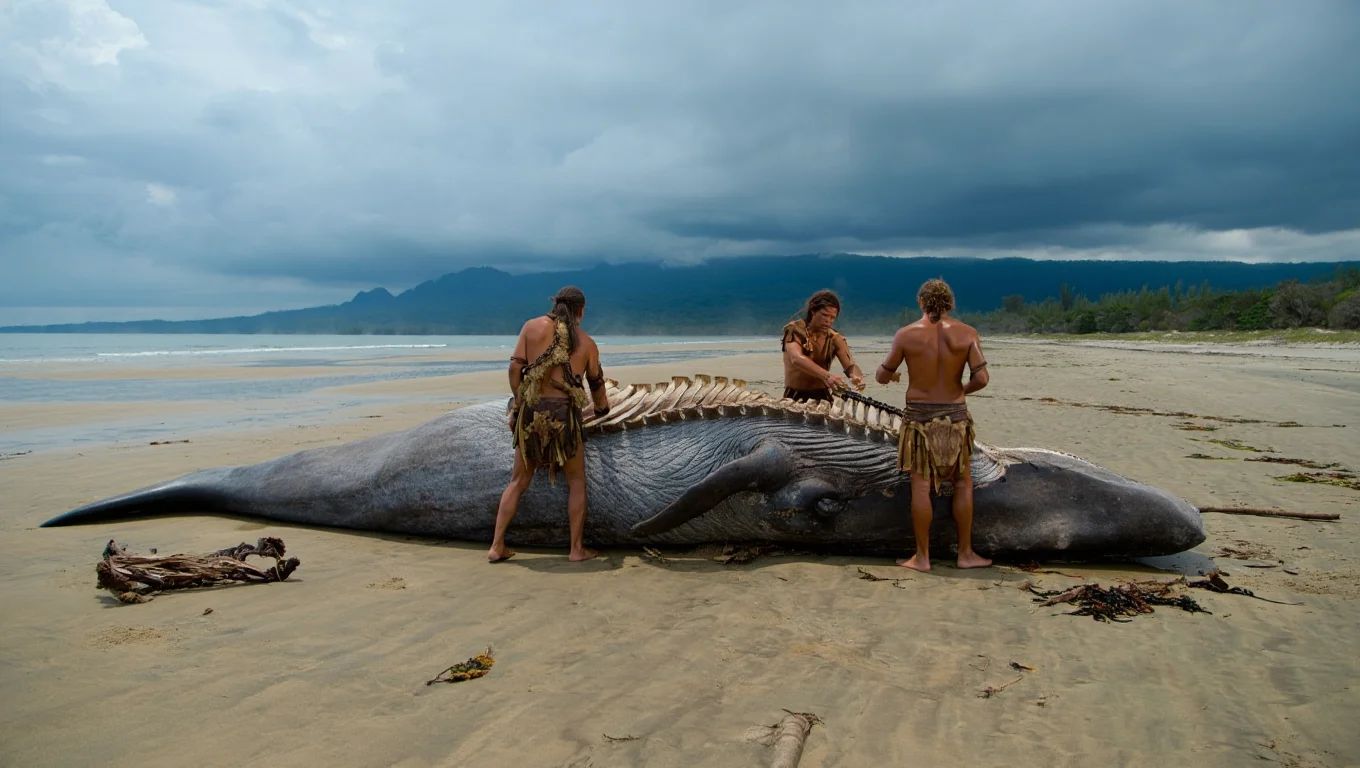🐋 20,000 years ago, humans made tools from whale bones
Published by Cédric,
Article author: Cédric DEPOND
Source: Nature Communications
Other Languages: FR, DE, ES, PT
Article author: Cédric DEPOND
Source: Nature Communications
Other Languages: FR, DE, ES, PT
Follow us on Google News (click on ☆)
An international study, published in Nature Communications, reveals that human groups in Europe exploited marine resources much earlier than previously thought. By analyzing bone tools from 26 archaeological sites, researchers identified five whale species used to craft projectile points and weapons.

Marine tools for hunting on land
The studied bones mainly came from sperm whales, fin whales, and gray whales. Their dense, straight structure made them ideal for shaping sturdy weapons. These tools were used to hunt land animals like reindeer and bison, demonstrating ingenious adaptation to available resources.
Isotopic analyses indicate these whales had different diets than today. Sperm whales primarily fed on squid, while gray whales foraged near coastal seafloors. This data provides unprecedented insight into prehistoric marine ecology.
Santa Catalina Cave in Spain yielded unworked but intentionally broken bones. Researchers suggest they were used to extract fat—a vital resource during ice ages.
An ancient bond between humans and the sea
Humans likely did not actively hunt whales but took advantage of strandings. Transporting these bones over several miles (kilometers) highlights their economic and symbolic value. This practice reveals systematic coastal resource exploitation long before deep-sea fishing emerged.
The study also notes cultural shifts. After 16,000 years ago, whale bone use declined, possibly due to evolving trade networks or lifestyles. Yet their presence in inland sites underscores the importance of long-distance travel and exchange.
These findings challenge the notion of a Paleolithic economy solely focused on land. They illustrate prehistoric societies' adaptability to environmental constraints.
Going further: how are species identified from ancient bones?
The ZooMS (Zooarchaeology by Mass Spectrometry) method analyzes collagen sequences, a protein found in bones. Each animal species has a unique peptide signature, like a molecular fingerprint. This technique identifies bone fragments even when too damaged or incomplete for traditional morphological study.
ZooMS's major advantage lies in its speed and minimal material consumption. Just 10 mg of bone yields reliable results, preserving precious archaeological samples. Researchers then compare the spectra with a reference database containing collagen profiles of different species.
This approach enhances the study of ancient artifacts, especially fragmented marine bones. In this study, it distinguished closely related species like right whales and bowhead whales, impossible to differentiate by observation alone. Combined with carbon-14 dating, it offers precise insights into human interactions with prehistoric marine fauna.